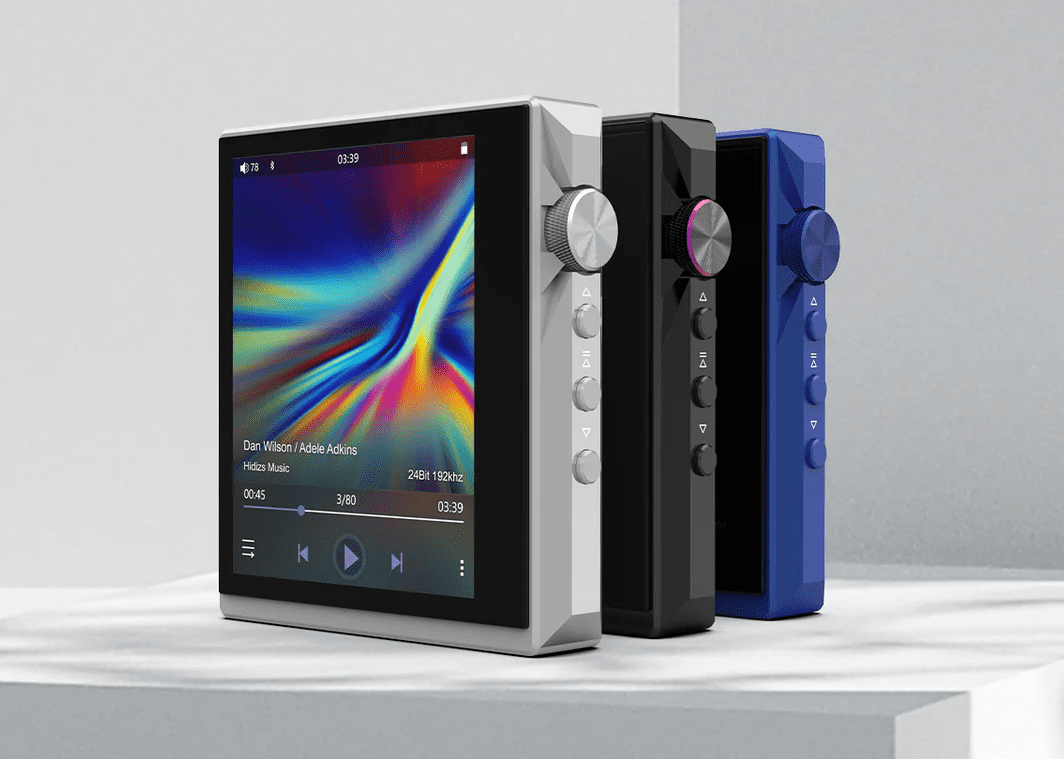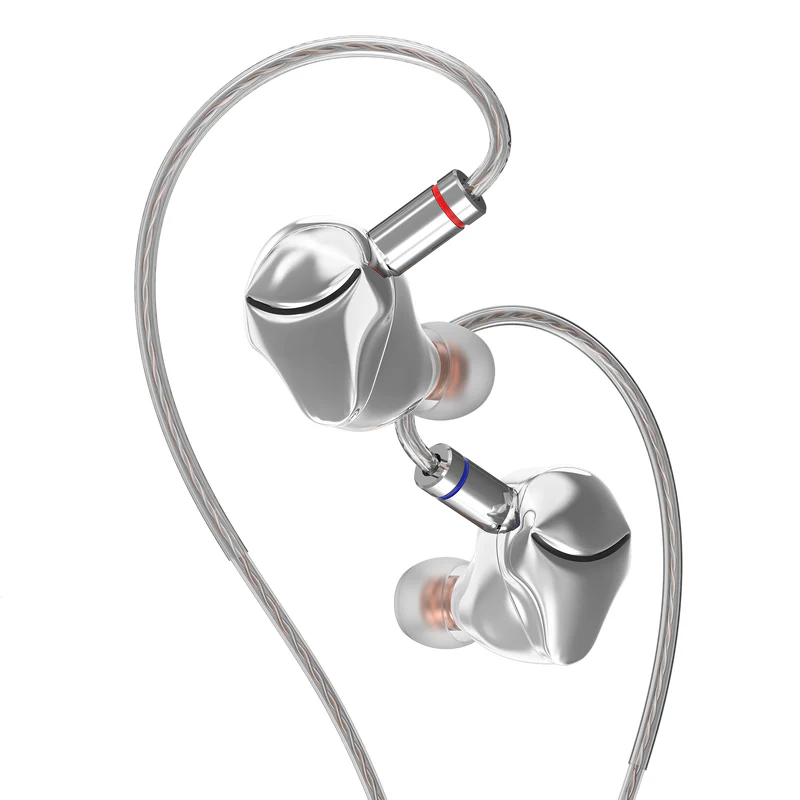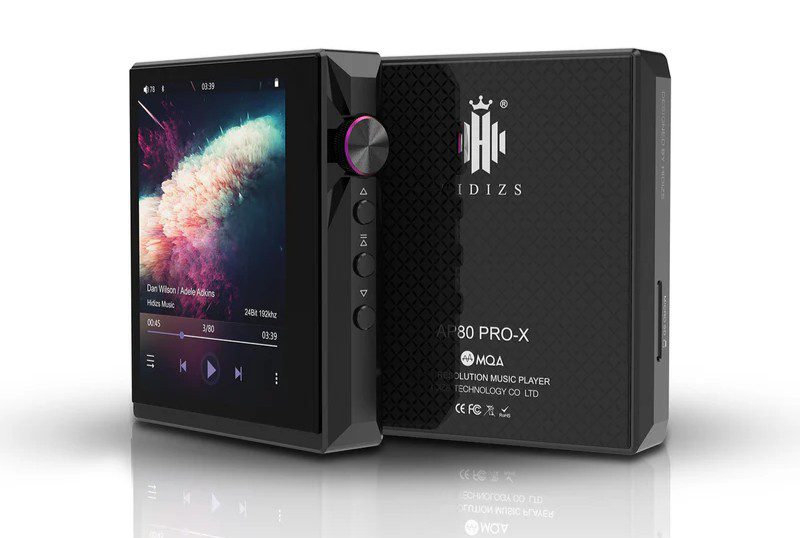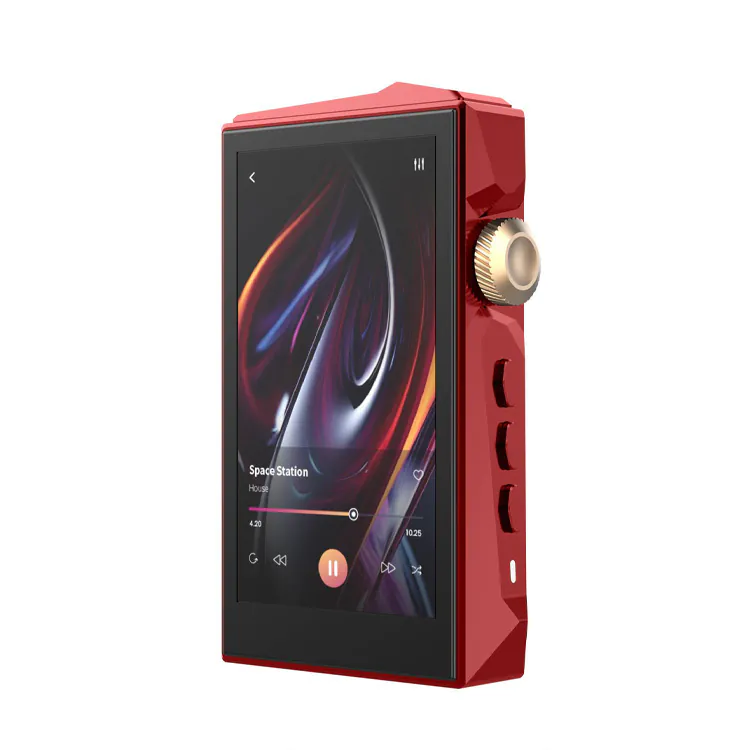
Prices listed are in US$.
HIDIZS AP80 Pro Max
$139 for 1st 500 units during Kickstarter campaign, $239 MSRP
With all the music apps available for phones, is there still a place in the world for a separate, stand-alone portable player? For many music lovers who spend a lot of time away from home, I think the answer is yes. On long trips, having music is important to me, but so is preserving as much of my phone’s battery life as possible. So, a small portable player with good battery life and connectivity is, for me, a mighty handy travel necessity. I suspect many other traveling music lovers feel the same way.
I’ve reviewed a lot of portable players over the years, but there are only a few I’d actually travel with. Flagship models from both Sony and Astell&Kern sound superb, but their size and weight make them for most people a no-fly zone. But on my trips, I do carry a portable player: one made by HIDIZS. Why? Because both HIDIZS players I’ve owned—the AP60 and AP80 Pro-X—have been excellent travel companions: small, light, reliable, with good battery life and excellent sound. So I was eager to review HIDIZS’s latest flagship, the AP80 Pro Max. It shares similar dimensions and weight with the AP80 Pro-X but features a cooler shape, a clever sideways-mounted leather case, and connectivity up the wazoo.
And it packs a wallop. It easily drove the hardest-to-power headphones in my collection—the Dan Clark Stealth and the Beyerdynamic DT 990 (600 Ohm)—from either its mini-stereo single-ended or 4.4mm balanced outputs. With my most sensitive in-ears, the Empire Ears Zeus CIEM (115 dB), the AP80 Pro Max remained silent, with no hiss, hum, or noise of any kind.
So how does it sound? That depends on which EQ filters you choose. HIDIZS includes several built-in curves, but you can also create and save your own. Tidal and Qobuz streaming are supported over 2.4 GHz Wi-Fi, and the player also features LDAC, aptX, MQA, native DSD 256, PCM 384/32, and bi-directional Bluetooth 5.1 functionality. In short, this is a powerful little device that can double as a desktop or phone-tethered DAC, in addition to being a stand-alone music player.
I’m not a big Kickstarter fan, having been burned by several projects in the past, but at $139, the HIDIZS AP80 Pro Max strikes me as a deal worth the Kickstarter risk. Even if you miss the campaign, though, its full MSRP of $239 still makes the AP80 Pro Max a superb value.
HIDIZS MK10 ArcSonics In-Ears

$89 ($59 Street)
Single-driver in-ears are among the easiest earphones to produce but the hardest to get right sonically. Expecting a single 10mm driver to cover the entire audible frequency range perfectly is an exercise in futility. The universal-fit HIDIZS MK10 ArcSonics aren’t perfect, but they’re a very listenable, well-made option for everyday use, and a great match for any portable player via a standard headphone cable.
My review sample came with an interchangeable HIDIZS braided cable with a 4.4mm balanced termination. Given its high sensitivity (113 dB), it doesn’t need a balanced connection. With the HIDIZS AP80 Pro Max, normal listening levels fell between 18 and 25 on a 0–100 volume scale.
HIDIZS provides a frequency response chart for the various filters and tips that come with the ArcSonics. The intrinsic curve roughly follows a Harman Curve, but with a few extra decibels below 300 Hz and several dips in the high frequencies—one about 5 dB between 3 and 4 kHz, and another nearly 10 dB between 5 and 7 kHz. This supports what I mentioned earlier: single-driver in-ears can sound good, but rarely neutral or flat.
For me, the fit of the ArcSonics was good, but not great. First, I tried some supplied tips before swapping the silicone ones for a pair of Comply foam tips. The MK10 ArcSonics’s zinc-alloy shells add weight, so without a secure fit they tend to slide out with the silicone tips. The barrel size is also fairly large, so listeners with smaller ear canals may find getting a comfortable fit challenging. For me, the foam tips were essential. While I wouldn’t call the HIDIZS MK10 a state-of-the-art design, it’s a well-made earbud that serves nicely as a daily carry to pair with any portable player.
Apos Audio Rock Lobster In-Ears

$60
The Apos Rock Lobster universal-fit in-ears are available exclusively through the Apos Audio website. They’re part of Apos’s in-house “Apos X” line of proprietary products. The Rock Lobster—named, I assume, after the B-52s’ hit—is marketed as a “fun” in-ear, complete with cartoony graphics and cheeky copy on the packaging. I’ll admit, I was concerned I’d be inserting the sonic equivalent of cotton candy into my ears, but that proved not to be the case.
Looking at the frequency response graph on the Apos site, it’s clear that the Rock Lobster “does its own thing.” The curve shows a gentle 10 dB dip beginning around 100 Hz and extending to about 2 kHz, followed by a peak at 3 kHz, another dip near 7 kHz, and a final rise around 9 kHz before a steady 20 dB roll-off. Not surprisingly, the resulting sound was, to my ears, pleasantly smooth and non-fatiguing.
With their red acrylic shells and relatively small nozzle bore, the single-dynamic-driver Rock Lobsters offer a surprisingly good fit—especially for a universal-fit in-ear. I tried all the supplied silicone tips but ultimately got a better, more occlusive seal with a pair of Comply foam tips. Once sealed, thanks to their light weight, compact size, and flexible cable, it was easy to forget the Rock Lobsters were in my ears. While they don’t come with a case or interchangeable filters to adjust the EQ, the Rock Lobsters do include a high-quality, replaceable cable with clear left and right markings, along with the aforementioned silicone tips. Personally, I much prefer lightweight acrylic-shelled in-ears like the Rock Lobster to heavier metal ones like the HIDIZS MK10, but of course, that’s a matter of personal taste. As an everyday carry, alongside a pair of Apple AirPods Pro 2, the Rock Lobster makes an excellent addition to an out-of-office travel kit.

















Leave a Reply